Knowledge of rated bends, manufacturers, and fire code helps contractors make informed decisions about the selection and installation of flexible fire sprinkler drops
In the first installment of QRFS’s two-part series on flexible fire sprinkler drops, we looked at the reasons why installers connect sprinkler heads to branch lines with flexible hose assemblies. But for those who’ve already decided to replace hard-pipe connections, there’s the matter of sorting through dozens of manufacturers, choosing from hundreds of assemblies, and—finally—installing them.
This article provides a need-to-know guide on selection and installation considerations for flexible fire sprinkler drops. We take a look at what makes one drop different from another, focusing on their rated flexibility before reviewing profiles of US-based manufacturers with UL-approved assemblies, such as FlexHead, VICFLEX, and more. Finally, we examine what the National Fire Protection Association (NFPA) requires for drops in commercial fire sprinkler systems.
Leading approvals and certifications differ on the subject of allowable bends
One critical consideration with all fire sprinkler drops is friction loss. Moving water generates friction as it chafes against pipes or tubes, causing a loss in pressure. This loss grows as the length or the roughness of the pipe’s or tube’s interior increases, as the diameter decreases, and as it bends.
To help installers choose a product that won’t unduly limit pressure from sprinkler heads, manufacturers offer a measure of friction loss. The resistance created by a drop’s tubing is measured in terms of equivalent lengths of one-inch schedule 40 pipe. The figures manufacturers provide are striking: some three-foot FlexHead drops, for example, generate as much friction as 24 feet of pipe, while the same length of VicFlex Series AH2 generates 21 feet.
These measurements are typically provided by one of two third-party agencies: UL or FM. Both groups test flexible fire sprinkler drops at their worst, with as many sharp 90-degree bends as their construction allows. But UL and FM test in slightly different ways. FM approvals have the greatest detail, providing friction loss equivalents that vary according to the K-factor, or orifice size, of the fire sprinkler served by the hose. FM tests these flexible fire sprinkler drops at 25 gallons per minute (GPM), 30 GPM, 35 GPM, and so on up to 65 GPM.
UL, on the other hand, provides a single measurement of friction loss. In the past, they’ve taken measurements of flow rates at 7 pounds per square inch, and then measure flows from 10 PSI to 100 PSI in increments of 5 PSI. These measurements are averaged, leaving purchasers with a result that falls somewhere in the middle of the measurements offered by FM.
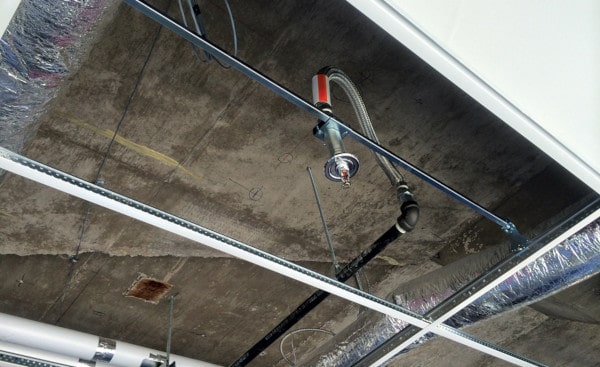
Numerous manufacturers give purchasers wide latitude in selecting flexible fire sprinkler drops
More than 40 manufacturers worldwide have products certified by UL for use as flexible fire sprinkler hose. Many companies making that list have already established a reputation as leaders in the fire sprinkler industry. Sprinkler manufacturers RASCO, Tyco, and Victaulic offer their brand-name takes on a decades-long history of flexible hose. But other manufacturers specialize in pipes, fittings, and—specifically—flexible drops. There’s Anvil International’s FlexHead and SprinkFLEX, Gateway Tubing’s Sidewinder, Aleum’s Quickonnect, and a whole lot more.
Our customers often express a preference for American-made goods. Consumers with such preferences have a far shorter list to start from, with US-based manufacturers of UL-listed flexible fire sprinkler head drops like:
- Anvil International (Exeter, NH)
- ARGCO (Fort Smith, AR)
- Gateway Tubing (Rolla, MO)
- Victaulic (Easton, PA)
To narrow down the list a bit, we’ll focus on the differences between products offered by each of these manufacturers in turn. While their products share much in common, each manufacturer has a different selection of lengths, approvals, K-factors, and bend characteristics—all worth considering before making a purchase.
Please note: this information is based on the approvals listed in the UL Product Spec database and information available at manufacturers’ websites at the time of writing. For more information, QRFS invites you to view UL’s listings for yourself or consult the manufacturer’s data sheets directly.
Anvil International (SprinkFLEX, FlexHead, SuperFlex)
With more than a century and a half in the pipe hanging and hardware business, Anvil International offers what may be the most varied and well-known selection of sprinkler drops. The New Hampshire-based company has ISO-certified manufacturing facilities in five states and the experience of fire safety titan Grinnell behind them. Their catalog includes more than 100 UL-listed drops, high-profile brands like FlexHead, and some unusual offerings—including an assembly rated for 12 bends in a mere six feet.
- Lengths: 24″, 28″, 36″, 40″, 47″, 48″, 59″, 60″, 71″, 72″
- K-Factor: 6K, 8.0K, 11.2K, 14.0K, 16.8K
- Maximum Bends (UL): Up to 12 (2, 3, 4, 5, 8, or 12)
- Minimum Bend Radius (UL): 2″-3″
- Bend at Nut: SprinkFLEX fittings should not be bent within 2 1/2″ of either end
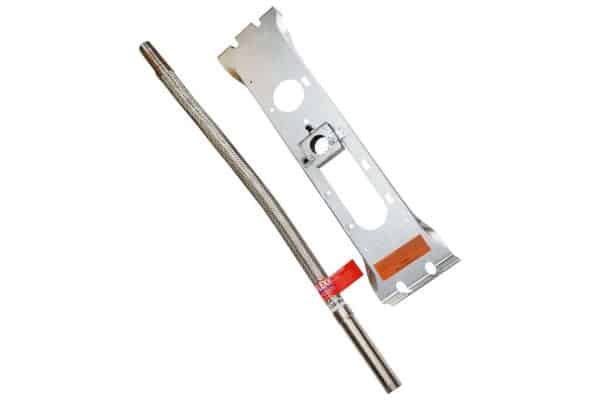
ARGCO
With humble beginnings in an Arkansas garage almost 40 years ago, ARGCO is one of the few manufacturers to explicitly offer flexible sprinkler head drops that comply with the Buy American Act, which requires that products be made in the United States from a substantial portion of American-made materials. While they don’t offer drops in the shortest lengths, their standard lengths of braided and unbraided hose have higher-than-average K-factors for wet and dry fire sprinkler systems.
- Lengths: 28″, 40″, 48″, 60″, 72″
- K-Factor: 5K (1/2″), 14.0K (3/4″)
- Maximum Bends (UL): Up to 3 depending on length
- Minimum Bend Radius (UL): 4″
- Bend at Nut: Unknown
Gateway Tubing (Sidewinder)
Gateway Tubing specializes in the production of flexible stainless tubing. While the Missouri-based company offers the most limited selection of lengths of any manufacturer considered here, Gateway’s Sidewinder drops include mounting assemblies that allow installers to choose a position along both the X and Y axes of ceiling tile at any position.
- Lengths: 30″, 48″, 60″
- K-Factor: Not Specified (Available with 1/2″ or 3/4″ outlets)
- Maximum Bends (UL): 2-3 depending on the length
- Minimum Bend Radius (UL): 4″
- Bend at Nut: Not within 2 1/2″ inches at either end.
Victaulic (VicFlex)
Of the companies considered here, only Victaulic provides a selection comparable to Anvil International. With more than 100 flexible sprinkler drops in a variety of sizes, this long-established manufacturer of fire protection and piping products has a sizable array of highly-flexible, large- and small-outlet hoses—both braided and unbraided. Victaulic’s VicFlex brand includes assemblies designed specifically for applications in clean rooms, ductwork, cold storage, and dry sprinkler systems.
- Lengths: 28″, 31″, 36″, 39″, 48″, 60″, 61″, 72″
- K-Factor: 6K, 8.0K, 11.2K, 14.0K
- Maximum Bends (UL): Up to 12 (2, 3, 4, 5, 8, or 12)
- Minimum Bend Radius (UL): 2″-4″
- Bend at Nut: Varies; see data sheets
Manuals, listings, and labels support code-compliant use of flexible fire sprinkler drops
After choosing a flexible fire sprinkler drop, contractors working with commercial fire sprinkler systems must observe a handful of provisions from NFPA 13: Standard for the Installation of Sprinkler Systems. NFPA 13 addresses these products in a subsection on the installation of pipe hangers termed “flexible sprinkler hose fittings.”
From the 2019 edition of NFPA 13
17.4.1.3.3* Flexible Sprinkler Hose Fittings.
17.4.1.3.3.1 Listed flexible sprinkler hose fittings and their anchoring components intended for use in installations connecting the sprinkler system piping to sprinklers shall be installed in accordance with the requirements of the listing, including any installation instructions.
NFPA 13 requires third-party testing and certification of flexible fire sprinkler drops. While we’ve stressed their importance for evaluating flexibility, listings also offer a great deal more, confirming a hose’s corrosion-resistance, pressure tolerance, and strength in the face of vibration.
To guarantee that sprinklers remain in their designated place after installation, NFPA 13 also requires labels on brackets or other anchoring components where movement is likely—namely, in suspended ceilings.
From the 2019 edition of NFPA 13
17.4.1.3.3.4* Where flexible sprinkler hose fittings are used to connect sprinklers to branch lines in suspended ceilings, a label limiting relocation of the sprinkler shall be provided on the anchoring component.
The NFPA 13 Handbook adds that other best practices can deter unwanted relocation, including choosing a drop with as little excess hose as possible.
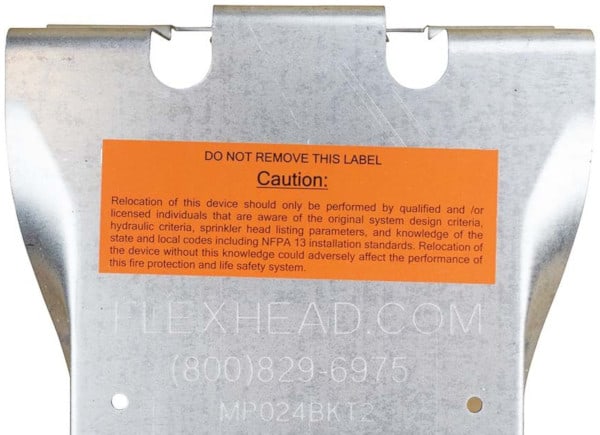
NFPA 13 prescribes requirements for pipe-hangers and ceilings used with flexible fire sprinkler drops
To ensure that drops have the support needed to stay in place, NFPA 13’s section on flexible sprinkler hose fittings adds requirements pertaining to pipe hangers and the ceilings themselves.
From the 2019 edition of NFPA 13
17.4.1.3.3.2 When installed and supported by suspended ceilings, the ceiling shall meet ASTM C635/C635M, Standard Specification for the Manufacture, Performance, and Testing of Metal Suspension Systems for Acoustical Tile and Lay-In Panel Ceilings, and shall be installed in accordance with ASTM C636/C636M, Standard Practice for Installation of Metal Ceiling Suspension Systems for Acoustical Tile and Lay-In Panels.
17.4.1.3.3.3* Where flexible sprinkler hose fittings exceed 6 ft (1.8 m) in length and are supported by a suspended ceiling in accordance with 17.4.1.3.3.2, a hanger(s) attached to the structure shall be required to ensure that the maximum unsupported length does not exceed 6 ft (1.8 m).
Not all ASTM C635/C635M suspension systems are created equally. The standard establishes rules for different types of ceilings—including guidelines pertaining to metal thickness, squareness, and length—depending on the loads those systems support. This first provision ensures that those ceilings are manufactured and installed in a way that can support any attached drops. The second provision puts a cap on the length—and, indirectly, the weight—of the supported hose.
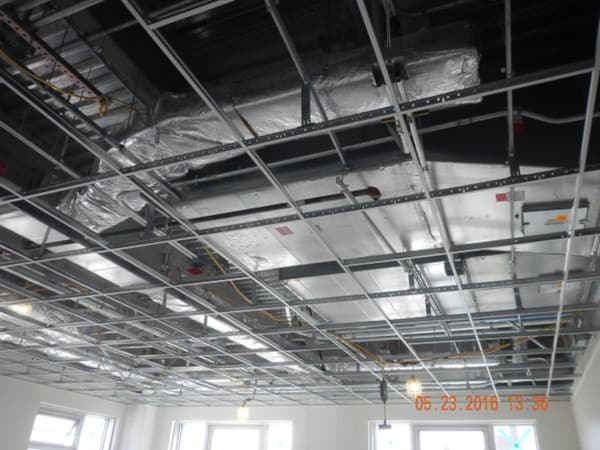
A variety of lengths, K-factors, and bracket designs help contractors find the right fire sprinkler drop for the job
With proper support, listings, and labels, installing a flexible fire sprinkler drop is simple. But when it comes to manufacturers, we’ve barely scratched the surface: dozens more carry listed and approved products, offering purchasers a huge selection to choose from.
If you’re in the market for a flexible fire sprinkler drop, our supply of FlexHead and SprinkFLEX assemblies includes:
- FlexHead assemblies in 24″, 36″, and 48″ lengths for 3/4″ sprinklers
- SprinkFLEX assemblies in 28″, 40″, 48″, and 71″ lengths for 1/2″ heads
- 59″ SprinkFLEX assemblies for both 1/2″ and 3/4″ fire sprinklers
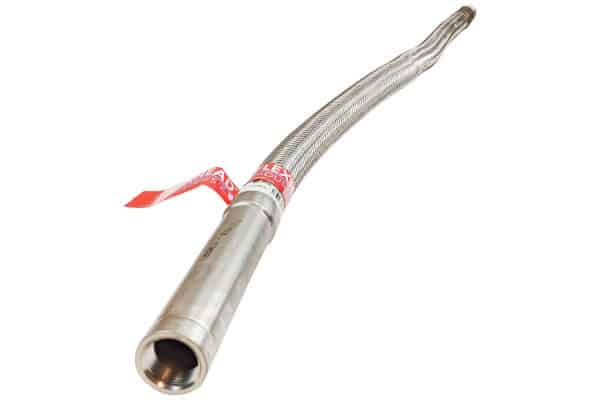
Among the most important differences between the two: FlexHead assemblies are FM-approved for K-Factors as small as 5.6K and as large as 16.8K, while our SprinkFLEX assemblies are FM-approved for K-Factors of 5.6K. There’s one exception—the 3/4″ x 59″ SprinkFLEX assembly is approved for use with both 5.6K and 8.0K sprinkler heads.
SprinkFLEX and FlexHead assemblies all feature stable brackets that allow sprinkler heads to install before placing the bracket in the ceiling. But our SprinkFLEX models feature a fully-adjustable bracket that gives installers maximum flexibility in sprinkler head placement, while the FlexHead models ship standard with a multi-port bracket that allows installers to quickly position the sprinkler head in the center or at either quarter of the bracket’s width.
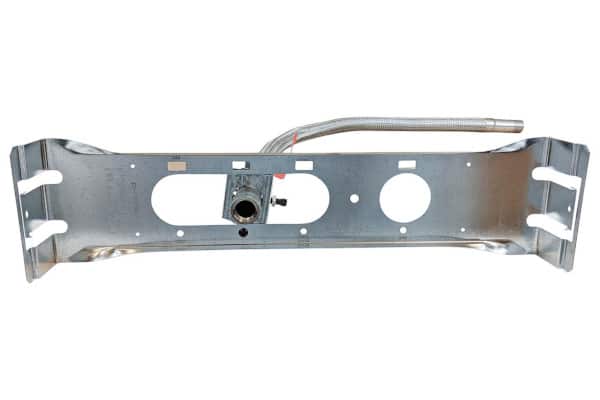
Compare and shop our selection of FlexHead and SprinkFLEX flexible sprinkler head drops by clicking here.
This concludes part two of our look at flexible fire sprinkler drops. Make sure to read part one, our introduction to drops, suspended ceilings, and sprinkler armovers.
Questions about flexible fire sprinkler drops? Call us at +1 (888) 361-6662 or email support@qrfs.com.
This blog was originally posted at blog.qrfs.com. If this article helped you select or install your drop, check us out at Facebook.com/QuickResponseFireSupply or on Twitter @QuickResponseFS.


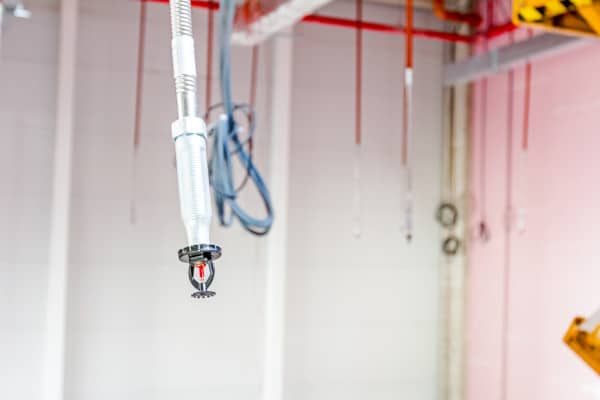

Are flex drops allowed in Ordinary Hazard group 2? And also I see so many companies installing flex drops on scheduled systems without getting a approval from an engineer.I think that is something that should be addressed in manufacturer’s instructions!
For code, standards, and system application questions like this, you can try our Ask a Fire Pro service. Click the link to submit your question with some information about your building or system, and a fire protection professional will provide an answer based on standards and codes. Our pros include AHJs, contractors, engineers, and code experts with 150+ years of combined experience!
Can the flex piping be painted?
Greg — For code questions like this, you can try our Ask a Fire Pro service. Click the link to submit your question with some information about your building and system, and a fire protection professional will provide an answer based on best practices, standards, and codes. Our pros include AHJs, contractors, engineers, and code experts with 150+ years of combined experience!
Yes – treat it like pipe. It’s referenced in the Victaulic installation instructions for the VicFlex hoses.
I have the following query of the UL/FM listed flexible pipes of 1″ and 1 1/2″ to be installed on branch pipe of a sprinkler system.
As per NFPA 13, are UL/FM listed flexible pipes allowed to be used to connect the branch pipes from the distribution main pipe and feed pipes of a sprinkler pipe?
Based on our understanding, flexible pipes are not allowed to be used when :
a) Fitted in the fully extended position and
b) To take up misalignment between a distribution main and the feed pipes to intermediate sprinklers.
Appreciate your confirmation and provide me with the relevant NFPA standard compliance on this usage. .
Best Regards,
Chong Y.K
Chong —
Apologies if we are not completely clear on your question. However, if by “flexible pipes,” you mean flexible sprinkler drops, known specifically as “Flexible Sprinkler Hose Fittings” in NFPA 13, they are only designed to connect fire sprinklers to system pipes, not branch lines to other pipes. You can find the relevant references in section 17.4.1.3.3 of NFPA 13 (2022 edition).